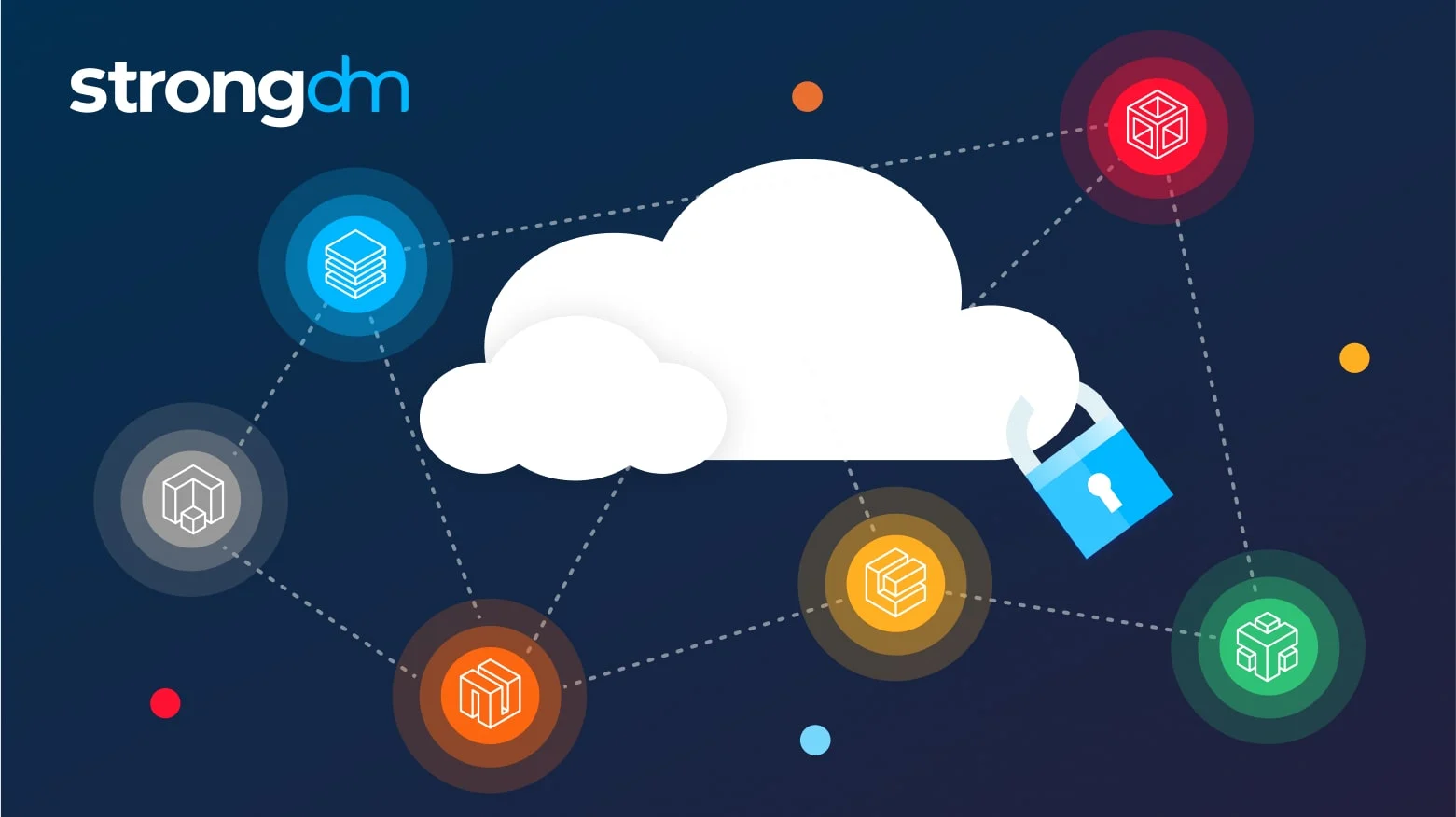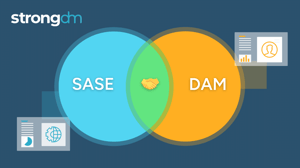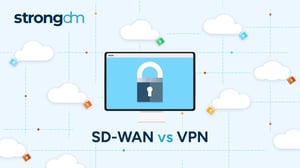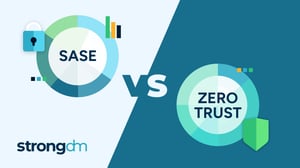SASE vs. CASB: Everything You Need to Know


Written by
John MartinezLast updated on:
June 26, 2025Reading time:
Contents
Built for Security. Loved by Devs.
- Free Trial — No Credit Card Needed
- Full Access to All Features
- Trusted by the Fortune 100, early startups, and everyone in between
Summary: In this article, we’ll take a big-picture look at how SASE and CASB solutions fit into the enterprise security landscape. We'll explore the key differences between SASE and CASB and explain how each tool helps ensure enterprise security. You will gain an understanding of how SASE and CASB solutions compare and which might be suitable for your organization.
What are SASE and CASB?
SASE (Secure Access Service Edge) and CASB (Cloud Access Security Broker) are two new strategies in the enterprise security landscape. SASE combines network security functions with wide-area network (WAN) capabilities. CASB focuses on securing access to cloud-based applications and services.
Secure Access Service Edge (SASE)
SASE is a cloud-based framework that enhances an organization's capabilities by combining network security and wide-area networking. SASE platforms allow businesses to
- Securely connect users to applications
- Precisely enforce security regulations
- Enhance operational efficiency
Cloud Access Security Broker (CASB)
CASB is a security solution that sits between cloud service consumers and cloud service providers to streamline enterprise security policies through the cloud. CASB provides the ability to
- Monitor and control data in the cloud
- Enforce corporate security standards
- Detect and avoid attacks
SASE vs. CASB: What’s the Difference?
CASB and SASE are solutions designed to address complex cybersecurity needs in a growing enterprise cloud environment. The difference between SASE and CASB is that SASE accomplishes this by integrating networking and security into one streamlined solution, whereas CASB uses traditional perimeter-based cloud security architectures.
An organization can integrate CASB into its security stack. WAN networking and security SASE is a fully integrated solution that links remote users and branch offices to cloud apps and the Internet.
Enterprises use CASB as a point solution to secure their cloud apps, whereas SASE is a platform businesses utilize to secure their network. SASE has many additional capabilities, providing organizations with a more expansive approach to security.
Organizations that require a comprehensive security solution can use SASE and CASB together. This combination offers visibility into and control over the entire network—from edges to the cloud—protecting data and applications more effectively from threats. Some SASE solutions offer the ability to add CASB separately, while others include CASB functionality as part of their overall offering.
Enterprises also have the option to use SASE and CASB solutions individually. A SASE solution is the better choice for all-around security and networking integration because it simplifies and streamlines security and network management. However, CASB is more easily added to an organization's existing infrastructure.
The Relationship Between SASE and CASB
The shift to a more remote world has pushed applications to become the backbone of enterprise productivity. As enterprise traffic moves off-premises and into the cloud, so must security controls. SASE and CASB technologies both provide the CASB functionality required for cloud security. Some enterprises use these solutions in tandem to address their cybersecurity needs.
SASE enables enterprises to connect users to applications securely, regardless of their location. Besides CASB, this holistic approach can incorporate network security functions such as secure web gateway (SWG), firewall as a service (FWaaS), and zero trust network access (ZTNA) with WAN.
CASB focuses on protecting enterprise data in the cloud and provides visibility and control over cloud applications. This ensures that only authorized users can access enterprise data.
An enterprise concerned primarily with securing its cloud applications may use a CASB solution, while a company looking for a complete approach may choose a SASE platform. But some organizations combine SASE software with CASB functionality for additional cybersecurity protection.
SASE provides secure access to applications and network infrastructure. Enterprises can use SASE's advanced security features, such as ZTNA and FWaaS, to protect their entire network. And because SASE is delivered as a service, it's easy to deploy and manage.
CASB offers more granular control over enterprise data in the cloud. CASBs can monitor and restrict access to specific cloud applications, ensuring that only authorized users can access data. This makes CASB an ideal solution for enterprises that need to maintain tight controls over sensitive data.
SASE and CASB: Which One Is Better?
Regarding security, enterprise organizations must be as in-depth and proactive as possible. SASE platforms, like an Autonomous Security Engine (ASE), offer a comprehensive approach to security, making them a good option for companies looking for a complete solution.
CASB solutions provide a clear look into a company’s control over its cloud applications. This can be a good solution for organizations that are concerned primarily with securing their cloud applications. However, enterprises requiring a more sweeping approach to security may want to consider a SASE platform like ASE.
A SASE approach is usually the best alternative for all-around security and networking integration because it reduces and organizes security and network administration. CASB is a more basic option than critical infrastructure protection (CIP).
Pros and Cons of SASE
Organizations need to consider a few key pros and cons when evaluating SASE solutions like ASE.
Pros:
- Complete and flexible
- Easy to set up and scale
- ZTNA provides cloud users with secure application access
Cons:
- Can be more expensive than other security solutions
- Require staff to understand network security needs
- Might be overly complex for companies needing to secure only their cloud applications
Pros and Cons of CASB
Enterprises should also consider the pros and cons of CASB solutions.
Pros:
- Provide the ability to address an increase in Shadow IT
- Give visibility into and control over cloud applications
- Can be deployed either as a service or on-premises
Cons:
- Require enterprises to understand cloud application security needs
- Can be difficult to integrate with other organizations' security applications and solutions
How to Choose the Right Tool for SASE and CASB
- Functionality: SASE and CASB solutions offer different capabilities. SASE solutions provide a broader approach to enterprise security, offering a wide range of security functions, including SWG, CASB, FWaaS, and ZTNA. CASB solutions focus primarily on providing visibility into and control over enterprise cloud applications.
- Deployment: SASE providers deploy solutions as a service, typically delivered via the cloud. CASB solutions can be deployed either as a service or on-premises.
- Pricing: Enterprise organizations typically subscribe to SASE services. CASB solutions can be offered as a subscription or for a one-time license fee, depending on the organization's needs.
- Flexibility: SASE solutions are highly flexible, supporting various enterprise security needs. CASB solutions are usually less flexible, requiring enterprise organizations to choose between different features and functionality.
- Ease of use: SASEs are typically more straightforward than CASBs because they offer a cloud-based delivery model and comprehensive features. CASBs can be more challenging when using their on-premises deployment model and limited feature set.
Understanding the differences between SASE and CASB can help companies determine which solution, or a combination of both, is the best choice for their organization. Enterprises need to consider many factors, including the organization's size, complexity, budget, and security needs. When seeking a complete and highly flexible solution, enterprises can consider a SASE platform like ASE. CASB solutions offer less functionality at a lower cost.
How StrongDM Can Help with SASE and CASB
As cloud-based workforces gain popularity, secure access management in legacy, cloud, and even multi-cloud environments becomes increasingly essential.
StrongDM helps organizations with both SASE and CASB with our Zero Trust Privileged Access Management (PAM) solution, which gives enterprises visibility into and control over their entire network, from the edges to the cloud. This allows a company to protect its data and applications from threats more effectively. In addition, our platform is easy to set up and scale, making it a good option for enterprises looking for a comprehensive and limber solution.
SASE vs. CASB: Frequently Asked Questions
Is CASB the same as SASE?
No. CASB gives organizations visibility into and control over their cloud applications. SASE combines network security functions with WAN capabilities to support the dynamic, secure access needs of organizations.
Does SASE include CASB?
SASE can include CASB, but not all SASE platforms do. CASB provides visibility to enterprises, which can be a vital component of a SASE solution. Companies should consider their specific security needs when choosing a SASE platform to ensure it includes all required features.
Is SASE the same as zero trust?
No, SASE is not the same as zero trust. SASE focuses on managing all aspects of technology, while zero trust focuses on controlling access to the network, apps, and data.
Is SASE cloud security?
SASE combines network security functions with WAN capabilities, which include enterprise cloud security. It also addresses other enterprise security needs.
Conclusion
The enterprise security landscape is intricate and challenging. Understanding how a cybersecurity solution can aid specific enterprise needs is key to staying safe in a digital environment.
By knowing the differences between SASE and CASB and understanding which solution fits an organization best, an enterprise can strengthen its network while keeping workflows and costs in mind.
Want to learn more? See how an enterprise privileged access management solution can work for your organization. Get a demo of StrongDM.
Next Steps
StrongDM unifies access management across databases, servers, clusters, and more—for IT, security, and DevOps teams.
- Learn how StrongDM works
- Book a personalized demo
- Start your free StrongDM trial

Categories:

About the Author
John Martinez, Technical Evangelist, has had a long 30+ year career in systems engineering and architecture, but has spent the last 13+ years working on the Cloud, and specifically, Cloud Security. He's currently the Technical Evangelist at StrongDM, taking the message of Zero Trust Privileged Access Management (PAM) to the world. As a practitioner, he architected and created cloud automation, DevOps, and security and compliance solutions at Netflix and Adobe. He worked closely with customers at Evident.io, where he was telling the world about how cloud security should be done at conferences, meetups and customer sessions. Before coming to StrongDM, he lead an innovations and solutions team at Palo Alto Networks, working across many of the company's security products.
You May Also Like




